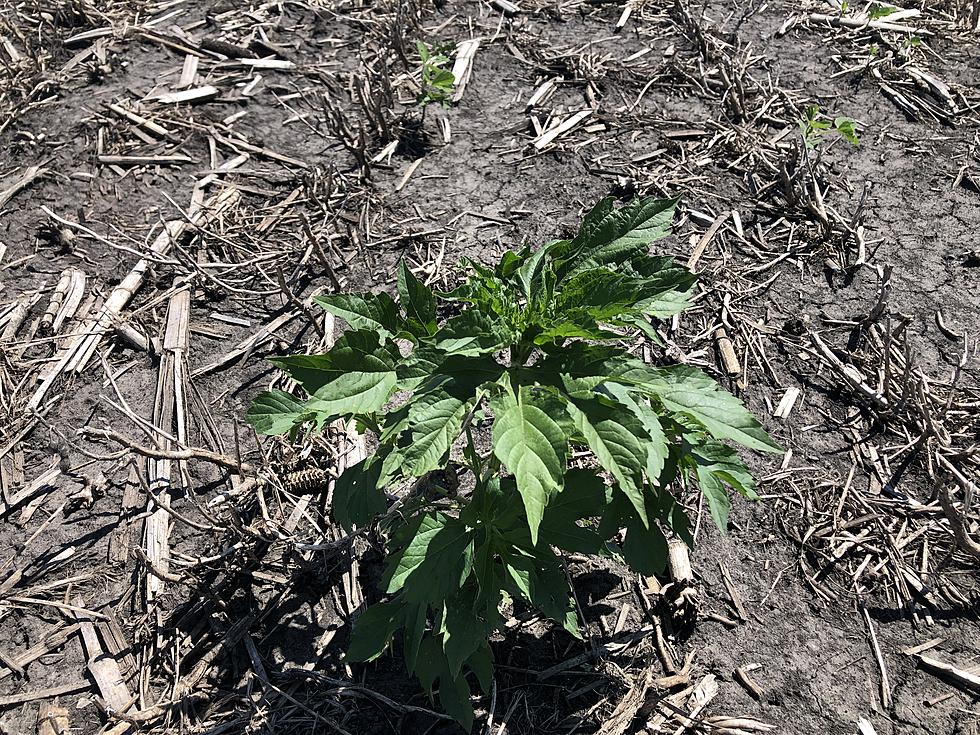
Screening For Herbicide Resistant Weeds
There have been many reports this summer of weeds escaping herbicide applications. Sometimes it may be that a small weed was under a bean leaf for example and did not get covered with the herbicide. However, in many instances it is a case where the weed may have developed resistance to the class of herbicides that were applied. So, the University of Minnesota Extension Service has started an initiative to screen weed populations for herbicide resistance.
They are targeting the weeds like giant ragweed, common ragweed, common lambsquarters, marestale, kochia, foxtails, barnyard grass and the pigweeds including waterhemp. If you have other weed species on your farm those can be screened too. Farmers are asked to keep an eye out for these escape weeds and take a sample of them to be screened at the University of Minnesota St Paul Campus. The weed screening is free for Minnesota farmers.
If you find an area of weeds while you are harvesting clip the seed heads from 5 or more plants and put them in paper bags. Do not use plastic bags as they promote mold growth. Seal the paper bags and send them to the University of Minnesota or you can drop them off at your local Extension office. The address is: Debalin Sarangi, 411 Borlaug Hall, 1991 Upper Buford Circle, St. Paul, MN 55018.
Include your contact information, GPS coordinate of the site or township and zip code. Also include the crop, weed name, herbicides applied, rates, timing, and field history if possible. The University of Minnesota Weed Science team will grow the weeds in the greenhouse at the St Paul Campus and screen them for potential herbicide resistance.
The results are typically available in 6 months. The Weed team will also prepare a map of the documented herbicide resistant weeds populations in Minnesota.
MORE TO EXPLORE: The 17 Snake Species of Minnesota
More From KDHL Radio
![[Listen] Gordy Recap Bean Acres Down 4 Million Corn Up 2 Million](http://townsquare.media/site/685/files/2021/06/BEANS-BEFORE-SPRAYING-6-26-17.jpg?w=980&q=75)
![[Listen] Gordy AG Market Recap Grans Sharply Lower Late Week](http://townsquare.media/site/685/files/2023/06/CHAD-SIDE-DRESSING-NITROGEN.jpg?w=980&q=75)
![[Listen] Gordy Recap Markets Closed Today](http://townsquare.media/site/685/files/2021/12/Soybeans-Growing91.jpg?w=980&q=75)
![[Listen] Jeff Vetch SROC How Much Nitrogen Did We Loose?](http://townsquare.media/site/685/files/2022/01/CHAD-SIDE-DRESSING-NITROGEN.jpg?w=980&q=75)
![[Listen] Gordy Market Recap Bears Have Everything Going Their Way](http://townsquare.media/site/685/files/2021/04/4430-PLANTING-SWEET-CORN-AT-NIGHT.jpg?w=980&q=75)

![[Listen] Gordy Ag Market Recap Brutal Week We Have Seen Before](http://townsquare.media/site/685/files/2022/06/CHADS-COMBINE1.jpg?w=980&q=75)
![[Listen] Gordy Ag Market Recap Fed Comments Spook Markets](http://townsquare.media/site/685/files/2022/06/CHADS-COMBINE1.jpg?w=980&q=75)
![[Listen] Gordy Ag Market Recap Pretty Good Action Friday](http://townsquare.media/site/685/files/2022/06/CHADS-COMBINE1.jpg?w=980&q=75)
